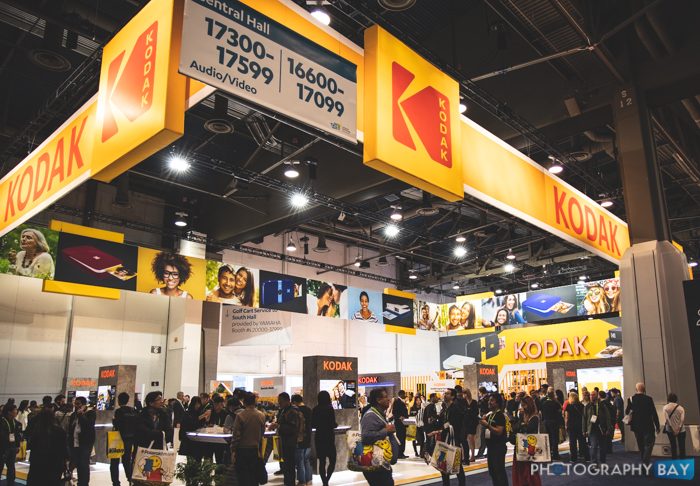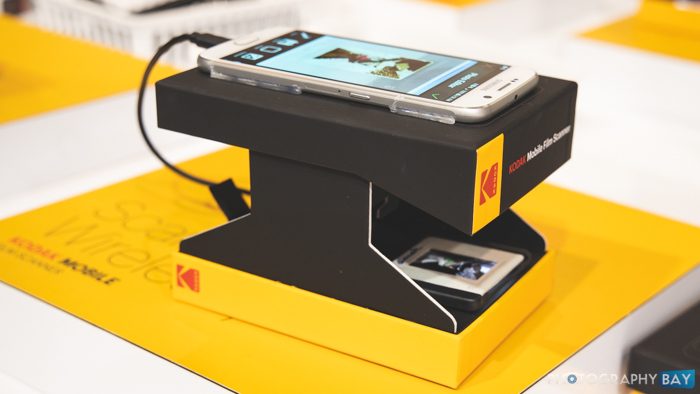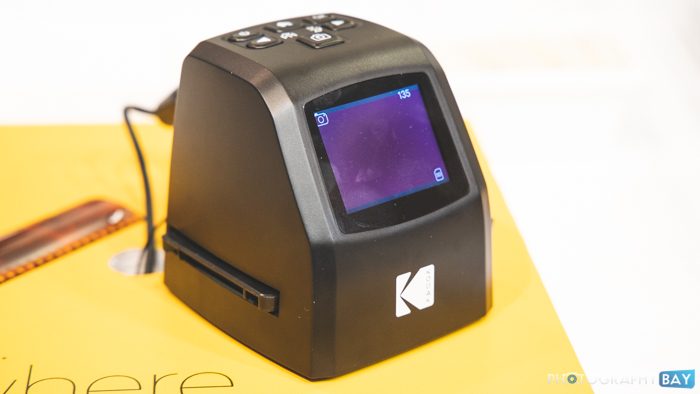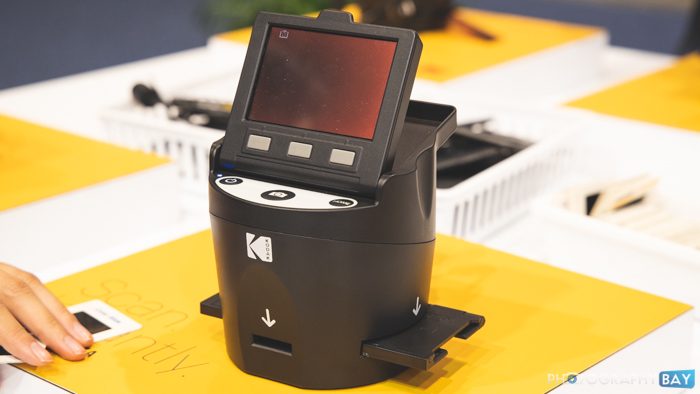
Kodak Booth at CES 2019
As digital imaging continues to mature as a market, we’re still sorting out the back and forth of analog media. Portable printing is becoming a big deal and several companies, including Kodak, are offering some impressive ZINK printers, which I’ll touch on in a different post.
Kodak also has a few solutions for scanning your images to digital files, some of which have been on the market for longer than others.

Kodak Mobile Film Scanner
The simplest and most affordable offering for getting negatives and slides to digital is the Kodak Mobile Film Scanner, which allows you to scan negatives and slides to your smartphone. It’s basically a foldable cardboard body with a built-in light for illuminating the media. You use a dedicated app to convert the negatives and further edit the “scanned” images.
I don’t have a product link for this Kodak Mobile Film Scanner yet but it should retail for $39.99. This should be a handy little device for consumer-oriented media conversion and those situations where you don’t necessarily demand the highest quality.
The next step up is the Kodak Mini Digital Film Scanner. This is more of a traditional film scanner with a built-in capture device that offers 14MP scanning capture (22MP interpolated files) and offers a built-in display for image preview. It will scan to an SD card (up to 32GB) or connect to a computer. It works with film and slides ranging from 8mm to 35mm formats.
The Kodak Mini Digital Film Scanner is currently available for $129.99. You can find it here on Amazon.com.
Finally, the top-end of the consumer scanning product line is the Kodak Scanza Digital Film Scanner. The Scanza scans and saves 35mm, 126, 110, Super 8 and 8mm film negatives and slides to a computer via SD card. It has a larger 3.5″ display (compared to the 2.4″ on the Mini) and an HDMI output to connect to a TV. The Scanza retails for $169.99. You can find it here at B&H Photo.




So the fancy Scanza thing – it claims to scan in movie formats but is that just taking individual frames and creating JPEGs from them? Or is there a way to digitize a movie into an MPEG file?
My understanding is that it scans each frame to a JPEG image. You would then have to assemble those frames into a video sequence at your desired framerate using other software.
The quality of this type of scanner is usually shocking and incredibly slow. If you want to transfer 1000’s of negatives to digital where are the cost effective solutions that many photographers are searching for?